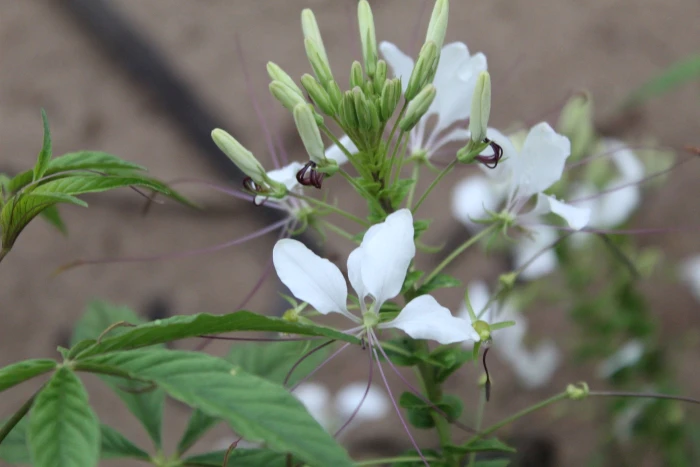Spiny Spiderflower
(Tarenaya spinosa)
Spiny Spiderflower (Tarenaya spinosa)
/
/

© Andrés Ramírez-Barrera
CC BY 4.0
Image By:
© Andrés Ramírez-Barrera
Recorded By:
Copyright:
CC BY 4.0
Copyright Notice:
Photo by: © Andrés Ramírez-Barrera | License Type: CC BY 4.0 | License URL: http://creativecommons.org/licenses/by/4.0/ | Uploader: nicolasr | Publisher: iNaturalist |























Estimated Native Range
Climate Requirements for Belmont, California
| This Plant | Your Site | Plant Suitability for Your Location | ||
|---|---|---|---|---|
| • Precipitation | 12" - 244" | 22" | Your precipitation may be insufficient for this plant. Irrigate N" / year. | Irrigate N" / year |
| • High Temp. | 67°F - 100°F | 76°F | Your summer temperatures are normal for this plant. | Excellent |
| • Low Temp. | 3°F - 75°F | 41°F | Your winter temperatures are normal for this plant | Excellent |
This plant should grow well at your location with about N inches per year (Y minutes per month) of irrigation.
Summary
Cleome spinosa, commonly known as Spiny Spiderflower, is an annual herb native to Mexico to South America. It has been introduced to the United States, tropical Africa, the Indian Subcontinent, Vietnam, New Caledonia, and Korea. This plant typically grows to a height of 3-5 feet (0.9-1.5 meters) and features palmately compound leaves with spiny stems. The Spiny Spiderflower blooms from early summer to fall, producing large, showy clusters of pink, purple, or white flowers with long, protruding stamens that give the appearance of spiders, hence the name.
The Spiny Spiderflower is valued for its ornamental flowers and is often used in borders, cottage gardens, and as a background plant in annual beds. It thrives in full sun to part shade and prefers well-drained soils. While it is drought-tolerant once established, regular watering promotes optimal growth and flowering. It is relatively easy to maintain, but gardeners should handle it with care due to its spiny stems. Tarenaya spinosa can self-seed prolifically, which contributes to its potential invasiveness in non-native regions.CC BY-SA 4.0
The Spiny Spiderflower is valued for its ornamental flowers and is often used in borders, cottage gardens, and as a background plant in annual beds. It thrives in full sun to part shade and prefers well-drained soils. While it is drought-tolerant once established, regular watering promotes optimal growth and flowering. It is relatively easy to maintain, but gardeners should handle it with care due to its spiny stems. Tarenaya spinosa can self-seed prolifically, which contributes to its potential invasiveness in non-native regions.CC BY-SA 4.0
Plant Description
- Plant Type:
- Height: 3-5 feet
- Width: 2-3 feet
- Growth Rate: Moderate
- Flower Color: White
- Flowering Season: Spring, Summer
- Leaf Retention: Semi-deciduous
Growth Requirements
- Sun: Full Sun, Part Shade
- Water: Low, Medium
- Drainage: Fast, Medium
Common Uses
Border Plant, Butterfly Garden, Drought Tolerant, Low Maintenance
Natural Habitat
Native to Mexico to South America and pollinated by bees and butterflies
Other Names
Common Names: Spiny Spider Flower , Thorny Spider Flower , Prickly Spider Flower
Scientific Names: Tarenaya spinosa , Cleome erucago , Cleome heptaphylla , Cleome heptaphylla , Cleome pubescens , Cleome pungens , Cleome pungens var. swartziana , Cleome sandwicensis , Cleome spinosa , Cleome spinosa
GBIF Accepted Name: Tarenaya spinosa